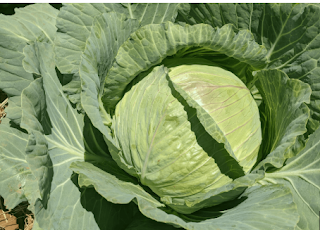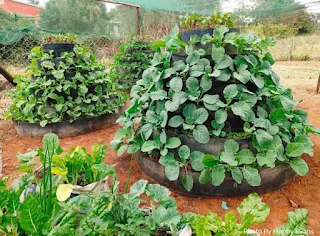Coconut
farming is booming, with global coconut product consumption steadily rising,
estimated to reach over $28 billion by 2027. The robust market for coconut
products presents an enticing opportunity for farmers. With the right knowledge
and strategy, coconut farming can be highly profitable.
 |
| Coconut Tree |
Coconuts
flourish in warm, humid environments. Coconuts (Cocos nucifera) have been grown in
Coastal Kenya for many centuries and are an integral part of the farming
systems in the region. Over 80% of the coastal farm households derive their
livelihoods either directly or indirectly from the coconut tree that is
considered as both cash and a food crop
Choosing
the right coconut variety is essential for maximizing profits. High-yielding
cultivars can produce up to 100 coconuts per year. Look for varieties like the
Dwarf Green Coconut and the Tall Variety, known for their adaptability and
disease resistance. Research shows that these cultivars thrive in various
climates and have good market demand.
Challenges Faced in Coconut Farming
Low
productivity is largely attributed to:
- Lack of quality seedling material.
- Aged orchards that are poorly managed.
- Lack of quality seedling materials.
- High pest infestations and disease in existing orchards.
- Excessive harvesting of old coconut orchards for timber and young nuts.
- Lack of technologies for mass production of coconut planting materials and trained personnel for dissemination.
Soils
The
coconut palm is found to grow under varying climatic and soil conditions. It is
essentially a tropical plant. The ideal temperature for coconut growth and
yield is 21 degrees Celsius to 32degrees Celsius. The coconut palm grows well
up to an elevation of 600m above sea level.
Basil Farming in Kenya: "Herb of Love".
However,
near the equator, productive coconut plantations can be established up to an elevation
of about 1000 m above sea level.
Rainfall
The
palms tolerate wide range in intensity and distribution of rainfall. However, a
well distributed rainfall of about 40-100 inches per year is the best for
proper growth and higher yield. In areas of inadequate rainfall with uneven
distribution, irrigation is required.
Planting Material
Coconut
is propagated through seedlings raised from selected seed nuts. Generally 9 to
12 month old seedlings are used for planting. Select seedlings, which have 6-8
leaves and 10-12 cm collar girth when they are 9-12 month old. Early splitting
of leaves is another criteria in the selection of coconut seedling.
 |
| Young Coconut Palms |
Site Selection
Shallow
soils with underlying hard rock, low lying areas subject to water stagnation
and clayey soils are to be avoided. Proper supply of moisture either through
well distributed rainfall or through irrigation should be ensured before
planting.
Land Preparation and Planting
On
slopes and in areas of undulating terrain, prepare the land by contour
terracing or bunding. In low-lying areas mounds are to be formed at planting
site to a height of at least 1m above water level. In reclaimed areas,
seedlings are planted on field bunds.
In
loamy soils with low water table, a pit size of 1mx1mx1m is recommended. In
laterite soils with underlying rocks, take larger pits of size 1.2m x 1.2m x
1.2m. In sandy soils the size need not exceed 0.75m x 0.75m x 0.75 m
Spacing
Spacing
depends upon the planting system, soil type etc.
Factors That Can Minimize Premature Fruit or Flower Drop: Ensuring Your Fruits Reach Maturity
Planting
Before
planting the pits are filled up with top soil and powdered cow dung or compost
up to a depth of 50 to 60 cm. Then take a small pit inside this, so as to
accommodate the nut attached to the seedling. Plant the seedling inside this
pit and fill up with soil. Press the soil well so as to avoid water stagnation.
In laterite areas apply 2 kg common salt per pit for improving the physical
condition of the soil. Burying 25 to 30 coconut husks per pit in layers will be
useful for moisture conservation.
Care of Young Palms
The
transplanted seedlings should be shaded and irrigated adequately during the
summer months. Also provide staking so that winds may not uproot the young
seedlings. For the first two years after planting, irrigate the seedling twice
a week during the dry summer months. Shading is a must to the transplanted
seedlings.
Manure/Compost
Regular
manure application from the first year of planting is essential to achieve
higher productivity. For coconut 20-50 kg organic manure should be applied per
palm per year when soil moisture content is high. Different forms of organic
manures like compost, farm yard manure, bone meal, fish meal, groundnut cake
could be made use for this purpose.
Irrigation
Soil
moisture very often limits coconut production in those areas where long spell
of dry weather prevail or where the rainfall is scanty and ill-distributed, so
irrigate the palms during summer months in basins around the palm. The
irrigation requirement varies according to the soil type and climatic
condition. Generally, an adult palm requires 600 to 800 liters of water once in
four to seven days.
 |
| Coconuts |
Irrigate
in basins of 1.8m radius and 10-20 cm depth. In coastal sandy soils, sea water
can be used for irrigating adult palms. Do not irrigate seedlings and very
young palms up to 2 years with sea water. In irrigated gardens interruption of
irrigation would lead to serious set-back in yield and general condition of
palms. Hence, when once started irrigation should be continued regularly and
systematically. Drip irrigation is the best suited method of irrigation for coconut.
It saves water, labor and energy.
Cultivation
Only
minimum tillage is required for coconut. Inter-cultural operations are mainly
intended to control weeds and to provide aeration to the soil. If these
objectives are met, any tillage system, that is ploughing / digging, making
mounds is as good as another and can be followed depending upon the local
conditions.
Husk Burial
Burying
fresh or dried coconut husks around the palm is a very beneficial practice
particularly for moisture retention especially in drought prone areas. The husk
can be buried either in linear trenches taken 3m away from the trunk between
rows of palms or in circular trenches taken around the palm at a distance of 2m
from the trunk. The trenches may be dug at 0.5m wide and at the same depth. The
husks are to be placed in layers with concave surface facing upwards and
covered with soil. The beneficial effects of husk burial will last for about
5-7 years.
Inter-Cropping
Schedule
for inter-mixed cropping may be drawn up based on the canopy size and
orientation of palms. A variety of intercrops like pineapple, banana,
groundnut, chilies, sweet potato and different vegetables can be raised in
coconut garden. In older plantation cinnamon, pepper, clove, nutmeg among
others can be grown as mixed crops. However, these inter mixed crops are to be
adequately and separately manured in addition to the manures applied to the
coconut palm.
Sweet Potatoes Farming in Kenya
Pests and Diseases
The
major insect pests of the coconut palm are the rhinoceros beetle, the red palm
weevil, the black headed caterpillar, the cockchafer beetle and the coreid
bug.
Management
- Practice clean cultivation by cutting and removing palms already damaged and the decaying stumps in the garden. Such palms should be split open and the different stages of pests inside burned off.
- Avoid injury to the trunk as pests lay eggs in these wounds. While cutting leaves, retain at least 1m of petiole.
- Use pheromone trap for attracting pests and kill the collected ones.
- If rhinoceros beetle attack is prevalent, follow recommended measures.
- Use fungicides if leaf rot / bud rot is noticed as the pests lays eggs in such palms.
- Application of recommended dosages of fertilizers and pesticides.
Diseases
These
include; Bud Rot, Leaf Rot, Stem Bleeding, Root Wilt.
Control
measures
For
Bud Rot, remove all affected tissue of the crown and apply Bordeaux paste on
cut end and provide a protective covering till normal shoot emerges. Spray recommended
herbicide mixture on the crown of the neighboring palms as a prophylactic.
Spray at an interval of 4 months if the disease occurs frequently. Cut and burn
severely affected palms which cannot be saved.
For
Leaf rot, improve general condition of palms through proper manure application
and management. Remove the decayed portions of spindle leaf and upmost two
leaves only.
For
Stem Bleeding, chisel affected tissue and dress the wound. Apply coal tar after
2 days. Burn off chiseled pieces. Avoid any mechanical injury to the stem. Provide
adequate irrigation during summer and drainage during rainy season. Apply
recommended doses of organic manures and chemical fertilizers.
For
Root Wilt disease, practice growing banana as intercrop in coconut. Apply
recommended dose of organic manures. Avoid flood irrigation and follow drip
irrigation. Practice clean cultivation and burn off diseased plant pests.
Harvesting
- Twelve months old nuts are harvested at the interval of 30-45 days for seed as well as copra making and culinary purposes.
- For household use keep the nuts in vertical direction. However, for tender nut purposes 7 to 8 months old nuts are harvested. The nuts can be harvested using coconut climbers.
- Nuts which are 11 months old give fiber of good quality. This is suitable for coir fiber.
- In case of tall the nuts harvested for seed purpose can be stored for 2 to 3 months period before sowing, whereas in case of dwarfs and hybrids, nuts should be sown with in a period of 10 –15 days of harvest.
On
an average, we can have eight harvests, though the coconut palm produces
inflorescence every month.
 |
| A Coconut Harvest |
Value Addition
Coconut has the advantage of having hundreds of uses which no other oil seed or horticultural crop can claim. Coconut products and by-products can be commercially utilized for multiple purposes. Coconut is a food as well as an oil seed crop. It is also a source of fiber, timber, and fuel. The coconut palm is also a beverage crop in the country. The coconut milk is an essential ingredient in many culinary preparations.
In
conclusion, building a profitable coconut farm requires careful planning,
diligent management, and effective marketing. Focus on the right variety,
maintain your trees properly, and stay updated on market trends to ensure
success. Explore the promising world of coconut farming today and take the
first step towards a fruitful venture!
Frequently Asked Questions
- Is coconut farming profitable in Kenya?
- What are the challenges facing coconut farmers in Kenya?
- How many months does a coconut tree bear fruit?
- What are the best climatic conditions for coconut farming?
- What are coconut varieties are there?
- What are the common pests and diseases affecting coconut farming?
- How are coconuts harvested?













